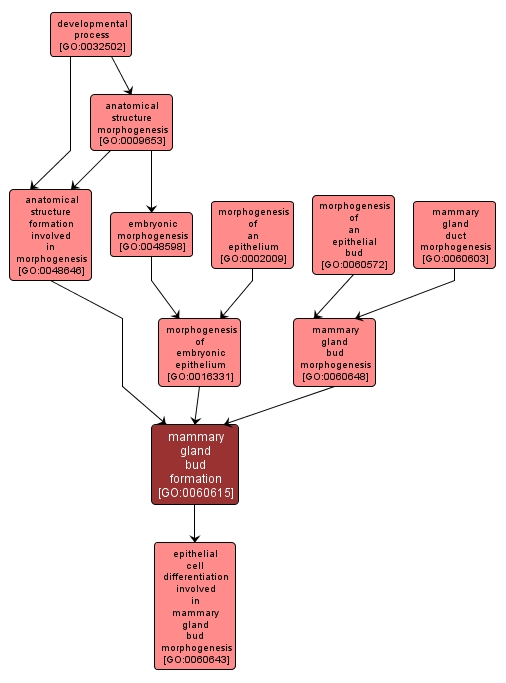GO TERM SUMMARY
|
| Name: |
mammary gland bud formation |
| Acc: |
GO:0060615 |
| Aspect: |
Biological Process |
| Desc: |
The morphogenetic process by which a bud forms from the mammary placode. A mammary bud is bulb of epithelial cells that is distinct from the surrounding epidermis. |
|

|
INTERACTIVE GO GRAPH
|














